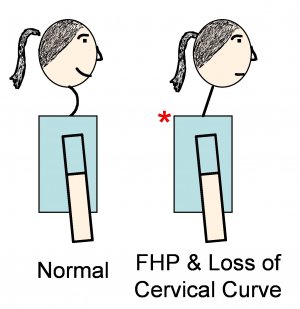It is important to understand how the alignment and curvature of the neck (cervical spine) can affect how you feel on a day to day basis. Many people walk around day to day, living with headaches and neck aches and think that it is considered normal.
The spine is made up of 3 main regions which give the body structure and support. These regions include the cervical, thoracic and lumbar vertebras. The curvature that occurs within the neck is called lordosis. Sometimes an individual, through improper biomechanics, can develop a lack of the curve in their neck which results in a straight spine.
curvature that occurs within the neck is called lordosis. Sometimes an individual, through improper biomechanics, can develop a lack of the curve in their neck which results in a straight spine.
The purpose of the curve in the cervical spine is to decrease the amount of weight and tension being placed onto the bones and evenly distribute the load. A straight spine can start to accelerate the degenerative process known to us as arthritis. It can also contribute to chronic headaches, neck pain and mid-back pain. If a case is serious enough, lack of cervical lordosis can be detected via a physical/visual exam although majority of the time doctors diagnose this through some form of diagnostic imaging such as x-ray or MRI. The three best things that an individual can do to restore the proper curvature as follows
- Routine chiropractic adjustments. Adjustments provide a posterior (back) to anterior (front) adjustment/push which puts the cervical spine into more of a proper curve.
- Chin tucks. These exercises can simply be done by taking the chin and actively pushing it directly backwards. Do not tuck the chin down to the chest but rather straight backwards.
- Back exercises and chest stretches. Performing any exercises where the individual is standing upright and pinching their shoulder blades together either with or without resistance is recommended. More directly to the point…scapular retraction. The individual will also need to stretch the pectoralis major muscle or “Pecs”. This can be done by simply standing in a doorway and putting their arms on each side of the door frame while leaning forward. By stretching the pecs and strengthening the back this will allow the shoulder to sit farther backward thus improving posture.
